The ancient city of Perge beckons history enthusiasts with its remarkable blend of architectural grandeur and cultural heritage. Established in the 8th century BC, the city flourished under Alexander the Great’s influence, leaving behind well-preserved structures that provide a tangible connection to its illustrious past. Visitors can wander through Perge’s ruins and experience the echoes of a vibrant civilization that once thrived on trade and cultural exchange in the heart of Pamphylia. What secrets lie within these iconic structures, waiting to be uncovered?
Key Points
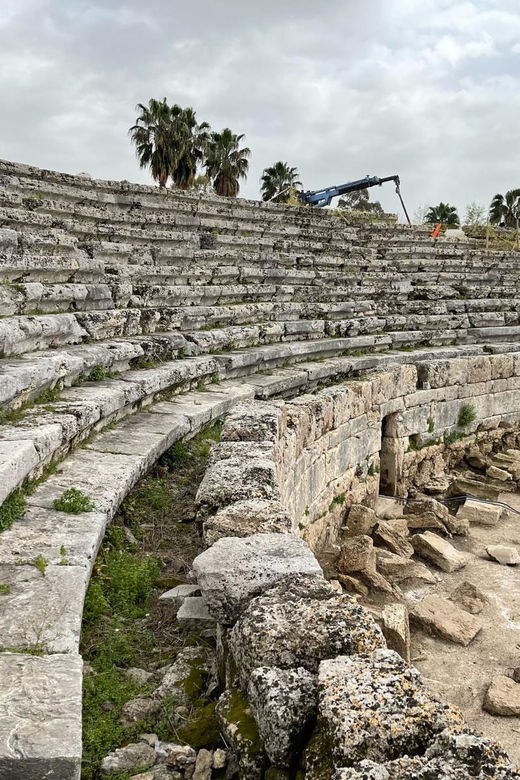
- Perge’s well-preserved ancient structures, including a theater, stadium, and gymnasium, offer a glimpse into the city’s rich Hellenistic and Roman heritage.
- The city’s strategic location along trade routes attracted influential civilizations, making Perge a significant historical center in the Pamphylia region.
- Alexander the Great’s conquest in 333 BC transformed Perge into a Hellenistic center, with the construction of grand public buildings reflecting the city’s regional prominence.
- Iconic structures like the ancient theater, colonnaded streets, and the grand city gate provide visitors with an immersive experience of Perge’s impressive ancient architecture.
- Thorough preparation, including comfortable attire, sun protection, and guided tours, can enhance the exploration of Perge’s captivating ancient history.
Exploring Perge’s Architectural Wonders
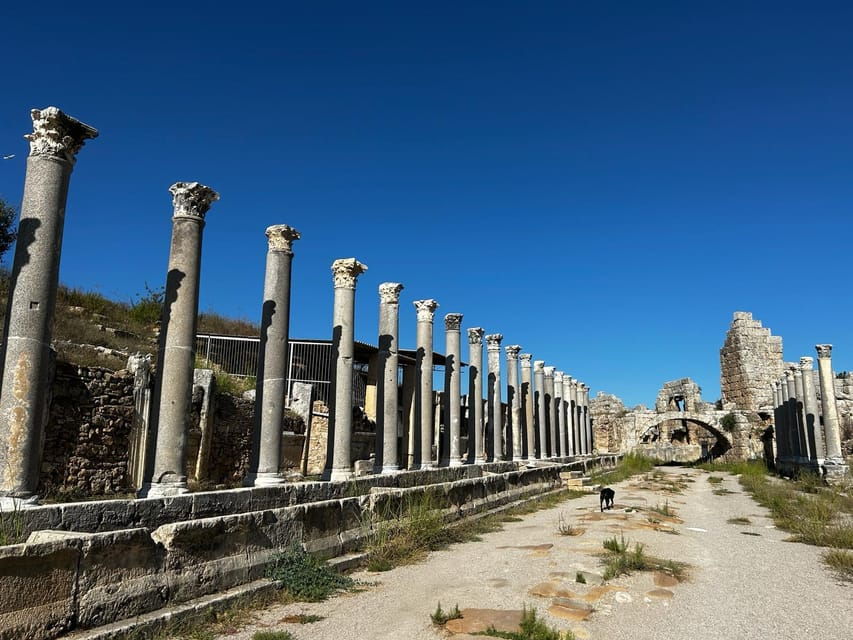
As visitors step into the ancient city of Perge, they’re immediately captivated by the grandeur of its well-preserved architectural marvels. The towering city gate, once the main entrance, sets the tone for the exploration ahead.
Wandering through the colonnaded streets, they’re struck by the scale and symmetry of the structures. The ancient theater, stadium, and gymnasium showcase the city’s prominence during its heyday. Ornate fountains and intricate floor mosaics add to the sense of sophistication.
Every corner reveals another layer of Perge’s rich cultural heritage, inviting visitors to uncover its captivating history.
Fascinated by the past? Here are other historical experiences we've covered in Antalya
Pamphylia’s Capital Through the Ages
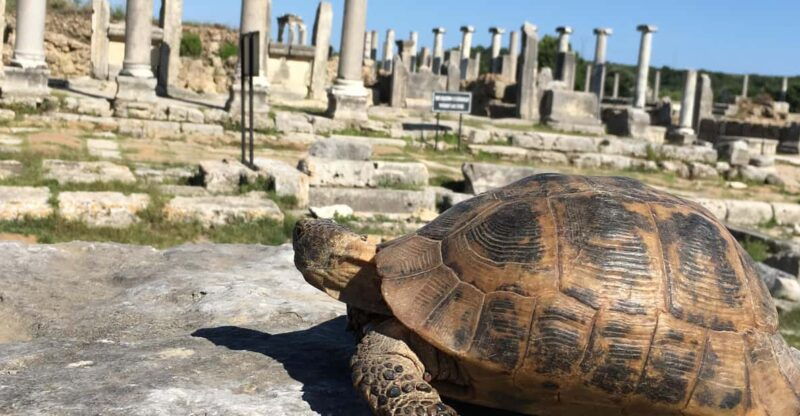
Perge’s prominence as the capital of the Pamphylia region has endured through the ages. Established in the 8th century BC, it flourished under Hellenistic and Roman rule.
Key highlights include:
-
Perge’s strategic location along ancient trade routes attracted influential civilizations, from Alexander the Great to the Roman Empire.
-
The city’s grand architecture, including a theater, stadium, and colonnaded streets, testify to its wealth and status during its heyday.
-
Archaeological excavations have uncovered a rich cultural heritage, shedding light on Perge’s pivotal role in the history of the Pamphylia region.
Alexander the Great’s Imprint on Perge
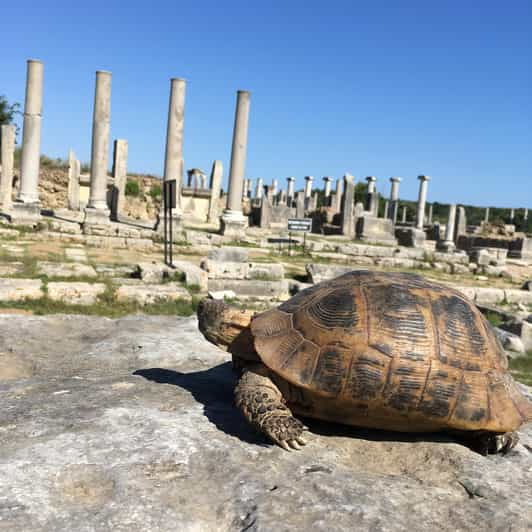
Alexander the Great’s conquest of Perge in 333 BC left an indelible mark on the ancient city. The Macedonian king’s invasion transformed Perge into a thriving Hellenistic center.
Alexander commissioned the construction of grand public buildings, including an impressive theater, gymnasium, and city gates. These monumental structures reflected Perge’s newfound status as a regional capital.
Visitors today can still marvel at the archaeological remnants of Alexander’s influence, providing a tangible connection to the city’s storied past. Exploring these ancient ruins offers a glimpse into Perge’s pivotal role during the Hellenistic era and Alexander the Great’s transformative impact.
Discovering the City’s Iconic Structures
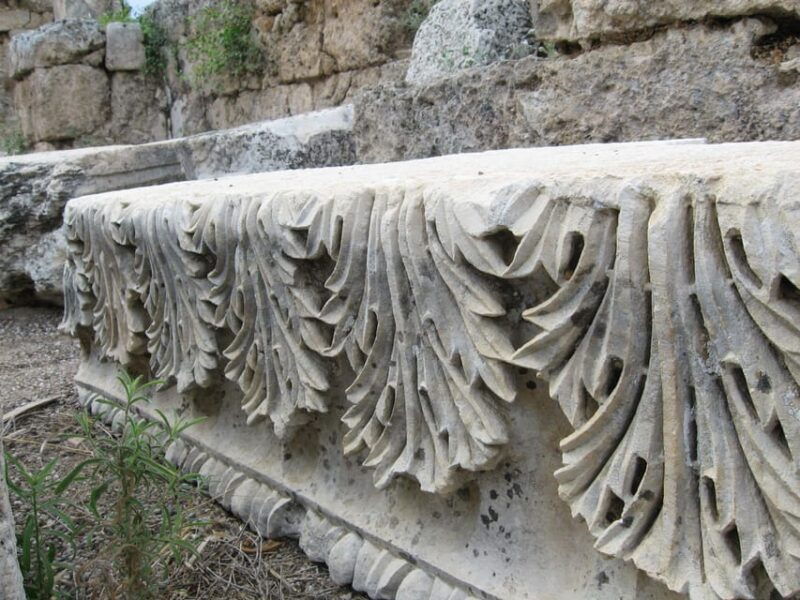
Strolling through the ancient city of Perge, visitors can’t help but be captivated by its iconic structures that have stood the test of time.
The ancient theater, with its well-preserved seating and stage, offers a glimpse into the vibrant cultural life of the past. The colonnaded streets, lined with grand fountains and basilicas, showcase the city’s impressive urban planning.
Nearby, the impressive city gate and stadium provide a sense of the grandeur and scale of this once-thriving center of the Pamphylia Region. Exploring these structures offers a profound connection to Perge’s storied history.
-
Ancient Theater: Meticulous restoration allows visitors to envision the lively performances that once graced this impressive stage.
-
Colonnaded Streets: Ornate fountains and basilicas along the streets reveal the sophistication of Perge’s urban design.
-
City Gate and Stadium: Monumental structures that convey the scale and importance of this ancient city.
Uncovering the Past Through Guided Insights
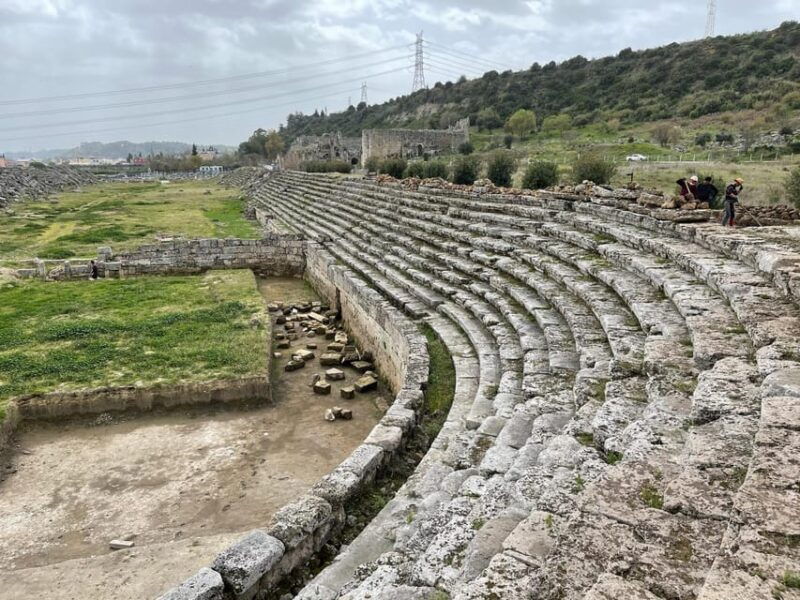
Joining a guided tour of Perge allows visitors to uncover the city’s rich past through the insights and expertise of knowledgeable local guides.
These expert storytellers bring the ancient ruins to life, sharing fascinating details about Perge’s history as the capital of the Pamphylia Region and its significance during Alexander the Great’s invasion.
Expert guides breathe life into Perge’s ruins, revealing its history as Pamphylia’s capital and role in Alexander the Great’s conquests.
Guests gain a deeper appreciation for the well-preserved monumental structures, from the grand theater and stadium to the colonnaded streets and baths.
The guided tour format ensures a personalized experience, with small group sizes allowing for ample opportunities to ask questions and capture stunning photographs.
- Full-Day Boat Tour From Antalya With Lunch and Foam Party
- Family Rafting Trip at Köprülü Canyon From Antalya
- Rafting, Buggy Safari and Zipline in Köprülü Canyon Antalya
- Full Day Salda + Pamukkale Tour From Antalya/Belek/Side
- Antalya Full-Day Combo Tour Jeep Rafting and Zipline
- Pamukkalea and Salda Lake Tour With Breakfast-Lunch-Dinner
Preparing for the Perge Adventure
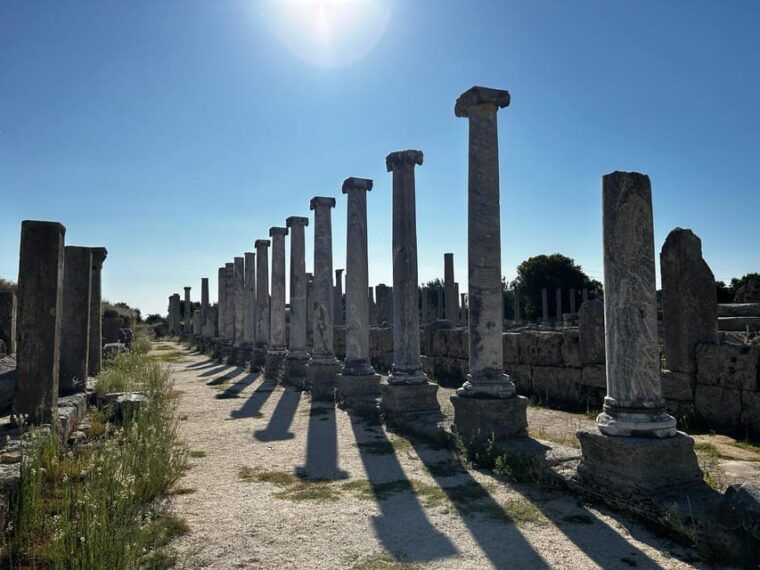
To make the most of the Perge adventure, visitors should plan ahead. A few key preparation tips include:
-
Wear comfortable shoes and clothing. Perge is an expansive archaeological site, so visitors will be doing a lot of walking over uneven terrain.
-
Bring sun protection. The Mediterranean sun can be intense, so a hat, sunglasses, and sunscreen are essential.
-
Stay hydrated. Carry a water bottle to sip on during the tour, as there may not be opportunities to refill along the way.
Following these simple steps will help ensure an enjoyable and comfortable exploration of Perge’s ancient wonders.
Travelers’ Perspectives on the Perge Experience
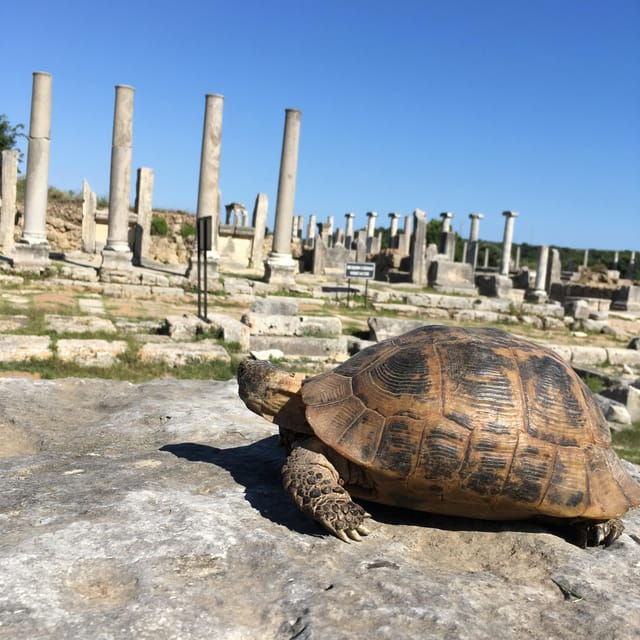
Though Perge’s ancient ruins hold a wealth of history, it’s the perspectives of past travelers that truly bring the site to life.
Consistently earning a 5/5 rating, the Perge tour receives glowing reviews that highlight the knowledgeable and engaging guides. Travelers praise the guides’ passion and storytelling abilities, which enhance the overall experience.
Specific mentions of guides Yonder and Onder showcase their ability to make the history come alive. With a personalized group size and free cancellation, the tour provides a flexible and immersive way to explore this captivating ancient city.
Frequently Asked Questions
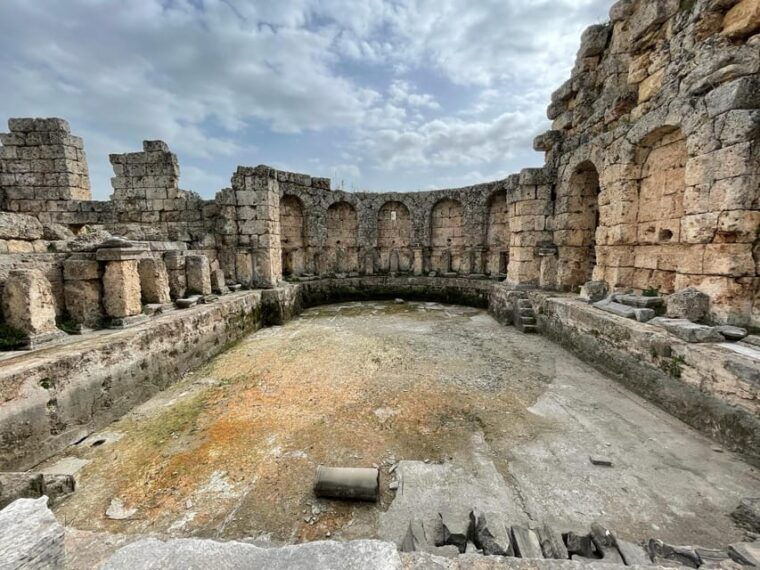
Is the Tour Available in Languages Other Than English?
The tour is offered with a live English-speaking guide. The tour doesn’t explicitly mention availability in other languages, so it’s unclear if translations are provided. Customers should inquire about language options when booking the tour.
Are There Any Discounts or Special Offers for the Tour?
The tour doesn’t offer any discounts or special offers. The price is a flat rate of Kč 1,253 per person. However, the tour allows for a Reserve now & pay later option for booking without immediate payment.
How Long Is the Drive From Antalya to the Perge Site?
The tour departs from Antalya and it’s approximately a 30-minute drive to the Perge archaeological site. The transportation to and from the site is included in the tour package, so participants don’t need to worry about driving themselves.
Can I Visit Perge on My Own Without a Guided Tour?
Yes, visitors can explore Perge on their own without a guided tour. However, a guided tour provides valuable historical insights and context that may enhance the overall experience, especially for those unfamiliar with the site’s significance.
What Is the Best Time of Year to Visit Perge?
The best time to visit Perge is during the spring or fall when temperatures are mild. Avoid the hot, humid summers and cold, rainy winters for a more comfortable sightseeing experience at this ancient archaeological site.
The Sum Up
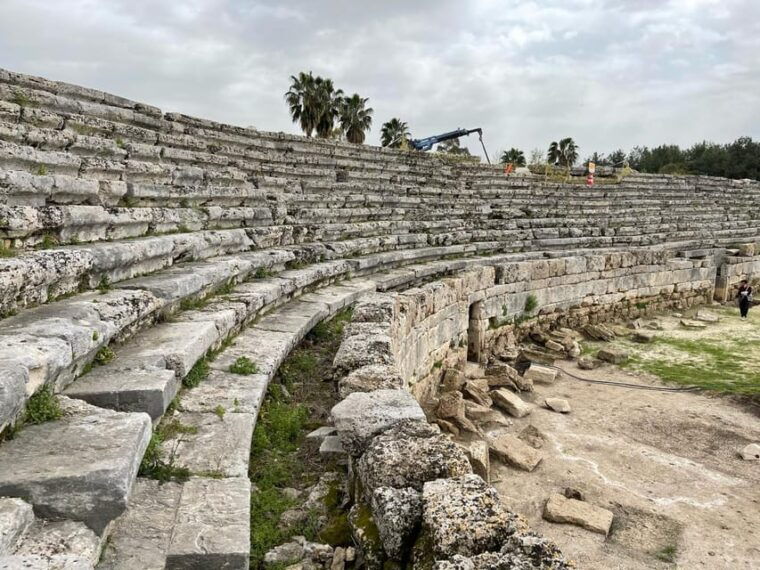
Perge’s enduring legacy captivates visitors, who can enjoy its ancient grandeur. From the majestic theater to the expansive colonnaded streets, the city’s well-preserved structures offer a tangible connection to its storied past under Alexander the Great’s influence. Guided insights and personal explorations allow travelers to uncover Perge’s rich cultural heritage, leaving them with a deeper appreciation for this remarkable archaeological treasure.
You can check availability for your dates here:More Kayak & Canoe Tours in Antalya
More Tour Reviews in Antalya
Still browsing? Here are more Antalya experiences we've covered recently
- Our 4 Favorite Antalya Walking Tours
- 10 Top Workshops & Classes In Antalya (With Reviews & Prices)
- 4 Best Full-Day Tours In Antalya (With Prices)
- 6 Best Massage & Relaxation Services In Antalya
- Antalya’s 4 Top Scuba Diving Experiences
- The Top 14 Tours In Antalya
- 3 Best Sailing Experiences In Antalya (With Reviews & Prices)
- 14 Most Highly Rated Lunch Experiences In Antalya
- We Rank The 4 Best Shopping & Market Tours In Antalya
- Antalya’s 4 Best Dining Experiences (With Prices & Reviews)
- Discover 3 Great Dinner Experiences In Antalya
- Antalya’s 14 Best Private Driver Services (With Prices & Reviews)
